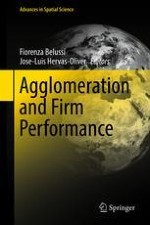2018 | OriginalPaper | Chapter
Natural Disasters and Firm Resilience in Italian Industrial Districts
Authors : Giulio Cainelli, Andrea Fracasso, Giuseppe Vittucci Marzetti
Published in: Agglomeration and Firm Performance
Publisher: Springer International Publishing
Activate our intelligent search to find suitable subject content or patents.
Select sections of text to find matching patents with Artificial Intelligence. powered by
Select sections of text to find additional relevant content using AI-assisted search. powered by
